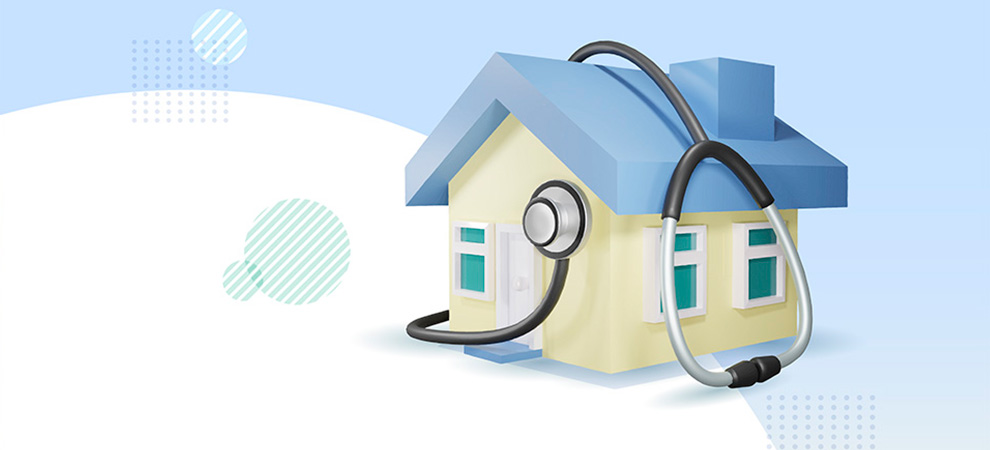As the nascent model becomes more entrenched, physicians are playing key roles and appreciating the experience
BY BONNIE DARVES, A FREELANCE HEALTH CARE WRITER
Physicians who are eager to expand their practice horizon and are interested in using innovative technologies to deliver comprehensive virtual care beyond the video sessions that proliferated during the pandemic may find a good fit in the emerging
hospital-at-home programs that health systems are implementing. Physicians who have at least a few years of hospital-based practice experience are being tapped to serve as chief care facilitators or medical directors for hospital-at-home programs,
and the demand for such expertise is predicted to grow in the coming years.

Illustration by kate3155 via Getty Images.
Hospital-at-home programs enable patients to receive high-acuity care in their homes, with the clinical oversight of physicians, typically hospitalists, and a combination of remote and onsite care providers. Most models operate from command centers
and feature a robust equipment and technological backbone for vitals monitoring and patient communication. In an ideal scenario, hospital-at-home care is intended for patients who are sick enough to warrant hospitalization but stable enough to
be safely cared for at home.
Primary candidates include patients with chronic-condition exacerbations or infections, those undergoing cancer treatment, and immune-compromised individuals at high risk for contracting infections. Some hospital systems are also exploring using the
model for post-surgical patients. In many current models, patients who present to the emergency department or are already on medical- surgical units are evaluated by physicians for their potential to be safely treated at home instead of admitted
to the hospital.
Hospital-at-home programs are not new. In Canada, England, Australia, and many European countries, such care models are well established, in part because they’re easier to implement with single-payer models. In the United States, hospital-at-home
programs were relatively rare until the COVID-19 pandemic push came to shove — catalyzing virtual care implementation in 2020 and spurring hospitals to create new programs on the fly.
Johns Hopkins pioneered the hospital-at-home model in the mid-1990s, but a movement didn’t ensue. Most of the programs in place today are nascent. However, as the U.S. Centers for Medicare & Medicaid Services continues to grant approval for hospital-at-home
programs that meet its criteria — as of June 2024, 331 hospitals in
37 states had been authorized to provide such services, according to the American Hospital Association (AHA) — the model is expected to become more prevalent. AHA, which
has 5,000 members, reports growing interest among members in establishing hospital- at-home programs.
The recently formed Hospital at Home Users Group has more than 100 active members, and an additional affiliate group includes hospitals and health systems that are considering establishing programs. These developments will increase demand for physicians,
primarily hospitalists, who can help launch and direct hospital-at- home programs.
The above is an excerpt from “Hospital-at-Home Practice Emerging
as a Growing Venue for Physician Practice” by Bonnie Darves. To read
the full-length article, click here.
Career resources content posted on NEJM CareerCenter is produced by freelance health care writers as an advertising service of NEJM Group, a division of the
Massachusetts Medical Society, and should not be construed as coming from,
or representing the views of, the New England Journal of Medicine, NEJM Group,
or the Massachusetts Medical Society.
